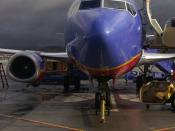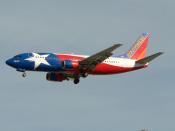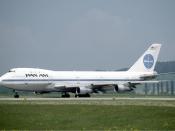Valujet
The airline industry has been subject of intense price competition since it was deregulated, and the
result has been a number of new carriers which specialize in regional service and no-frills operations.
These carriers typically purchase older aircraft and often operate outside the industry-wide computerized
reservations system. In exchange for these inconveniences, passengers receive low fares relative to the
industry as a whole. This research examines two low fare air carriers, ValuJet and Southwest Airlines.
By investigating these air carriers, we can better understand the economic impacts of price versus
service in the airline industry as a whole, as well as, the impacts on passenger and investor confidence.
Until 1978, air transport rates were approved by the government, which meant that price was not a primary
competitive factor. Instead, airlines would compete on service and image. The airline industry was
dominated by giants (American, United, TWA) which offered nationwide and some international service, and
by regional carriers, such as Southwest, which offered short trips between airports not served by the
nationals.
Deregulation of the airline industry brought about in 1978 introduced a situation in which the
national and regional carriers were suddenly able to compete in an environment that resembled a free
market. Rate schedules were lifted, price fixing was eliminated and route management was removed. The
main factors that affected whether an airline could serve a particular city was whether or not that city
had enough gates for the new carrier, and whether the carrier was able to afford to purchase them.
Companies such as Southwest recognized potential for low fares, and began building a niche for themselves
by offering low fares with equivalent low levels of service. Southwest's success gave rise to a new
generation of low fare airlines, with ValuJet entering the market in the early...


